
.png)

.png)
.png)


-
.png) 0086-757-85407388
0086-757-85407388 -

-
 terrychen@wintoly.com
terrychen@wintoly.com


.png)

.png)
.png)


.png)



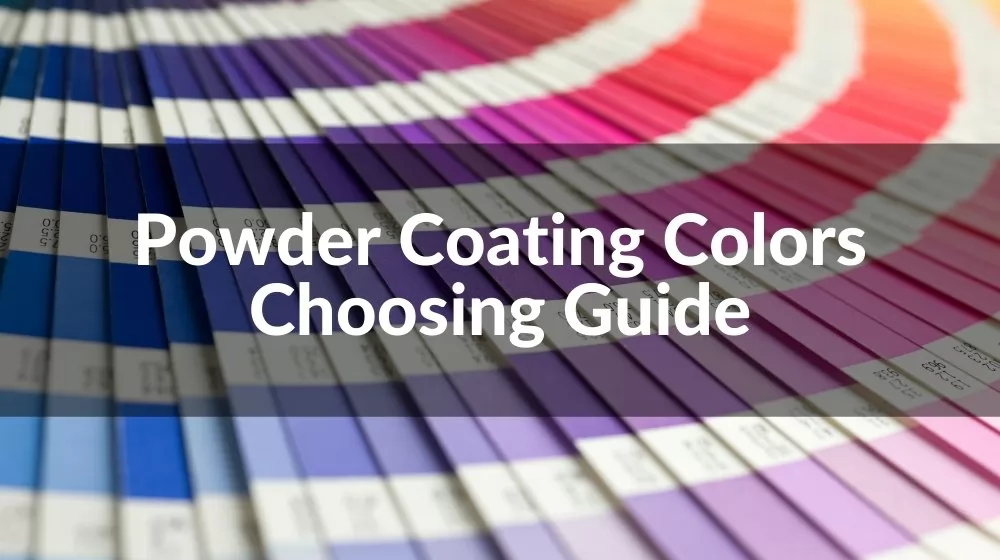
When it comes to transforming the appearance of your products, nothing beats the versatility and durability of powder coating. But with an extensive range of powder coating colors available, how do you choose the right one for your project? In this comprehensive guide, we delve into the world of powder coating colors, offering insights into everything from the basics of powder coating to choosing cool and trendy colors, and even creating custom colors to bring your unique vision to life. Let's embark on this vibrant journey.
When it comes to durability and premium finishes, powder coating has quickly emerged as a favored choice among manufacturers and consumers alike. But what exactly is powder coating, and why is it gaining such traction? Let's delve into the basics of this innovative technology.
At its core, powder coating is a type of coating that is applied as a free-flowing, dry powder. Unlike conventional liquid paint which requires a solvent, powder coating is typically applied electrostatically and then cured under heat or with ultraviolet light. The powder may be a thermoplastic or a thermoset polymer, which creates a hard finish that is tougher than conventional paint.
The magic lies in the process. The objects to be coated are first cleaned and pre-treated; then they're dried and cooled. The powder is sprayed onto the object using an electrostatic gun, or corona gun. The gun imparts a negative electric charge to the powder, which is then sprayed onto the grounded object by mechanical or compressed air spraying, and then accelerated toward the object by the powerful electrostatic charge.
The coated object then goes into a curing oven where, with the aid of heat, the coating chemically reacts to produce long molecular chains, resulting in high cross-link density. These polymers are what give powder coating its exceptional durability and resistance to abrasion, corrosion, and weather.
Now, where do colors fit into all of this? Well, that's the exciting part. There's virtually no limit to the types of finishes and colors you can achieve with powder coating. Whether you're looking for cool powder coating colors, the best powder coat colors, or simply wondering what colors are available for powder coating, the sky is the limit.
From the standard powder coat colors to the most exotic, powder coating paint colors come in a vast range. The color palette is indeed one of the significant advantages of powder coating, making it a popular choice for various applications. But how do you choose the right color and finish for your project? That's precisely what we'll explore in the following sections.
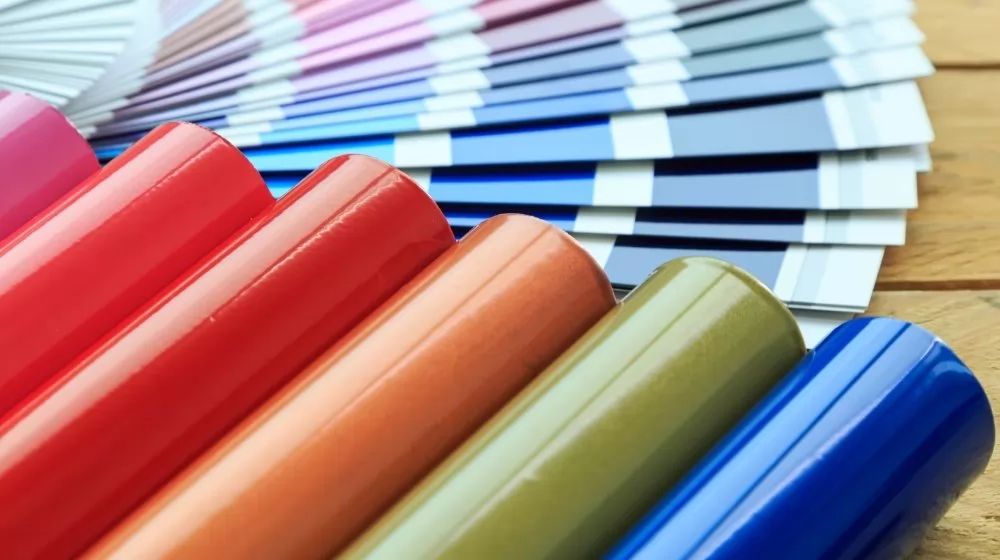
The powder coating process may seem complex, but at its essence, it's a series of straightforward steps, each vital to achieving the perfect finish. Let's take a quick look at the process from start to finish.
The process begins with pre-treatment, a stage crucial to ensuring a flawless application of the coating. The object to be coated is thoroughly cleaned to remove any dirt, grease, or rust that could interfere with the adhesion of the powder.
After the object is cleaned and dried, the powder is applied using an electrostatic spray deposition (ESD) process. A spray gun applies an electrostatic charge to the powder particles, which are then attracted to the grounded object, ensuring an even coating.
Following the powder application, the object moves into a curing oven where heat causes the powder to gel, flow, and then chemically react to form a high molecular weight polymer. This curing process gives the coating its long-lasting and durable characteristics.
It's within this process that the choice of color comes into play. Whether you're seeking the coolest powder coat colors or the standard powder coat colors, the color is typically added to the powder prior to application, providing a wide range of options for the end product.
In the next section, we'll discuss the various powder coating colors available and how to choose the right one for your project.
When it comes to finishes, powder coating offers two main types: matte and gloss. Matte finishes are devoid of shine, offering a modern and sophisticated look. These finishes are excellent for hiding surface imperfections and are perfect for applications requiring minimal reflection, like high-end electronics or interior design elements.
Gloss finishes, on the other hand, have a high sheen and create a reflective surface. These are ideal for highlighting color and vibrancy, and are frequently used for automotive parts, bicycles, and other items where high visibility and impact are desired.
For an aesthetic that harks back to a bygone era, antique and patina finishes are an excellent choice. These powder coatings create the look of aged bronze, copper, or other metals, adding character and vintage charm to the coated item. From architectural elements to decorative items, these finishes bring a unique, old-world appeal.
Candy colors are a vibrant subset of the powder coating color spectrum, offering an intense, translucent finish. Named for their candy-like sheen, these colors allow the base material's texture or color to show through the coating, resulting in a deep, rich, and lustrous finish. These colors are especially popular in the custom automotive industry.
As you can see, the array of powder coating colors available is vast and varied. The color and finish you choose can dramatically affect the final look and feel of your coated item. So, it's worth taking the time to understand these options and how they might align with your project's requirements and your personal preferences.
Translucent finishes offer a see-through appearance that can add depth and dimension to the base material. These powder coat colors are often used on metal substrates to maintain a metallic sheen while adding a touch of color. They can also be applied over other colors to create unique effects.
Clear finishes, on the other hand, provide a protective layer without altering the color of the base material. This type of powder coat is especially popular for protecting metal against rust and corrosion while preserving its natural appearance.
Hammer tone finishes create a distinct pattern that resembles the surface of a hammered metal. This unique finish adds depth and texture to the surface, providing a robust and rugged look that's ideal for industrial applications and outdoor furniture.
Wrinkle finishes, on the other hand, have a slightly rough surface that resembles a wrinkle pattern. These coatings are excellent for hiding surface imperfections, reducing glare, and providing a non-slip surface. They are often used for toolboxes, industrial machinery, and other practical applications.
For applications that require resistance to high temperatures, there are specific powder coat colors designed to withstand extreme heat without discoloration or loss of finish. These are ideal for applications such as engine parts, exhaust systems, grills, and other items that are exposed to high heat.
In conclusion, understanding the extensive variety of powder coating colors available helps you make informed decisions about your coating needs. Whether you're looking for something bold and bright or subtle and understated, there's a powder coat color out there that's perfect for your project.
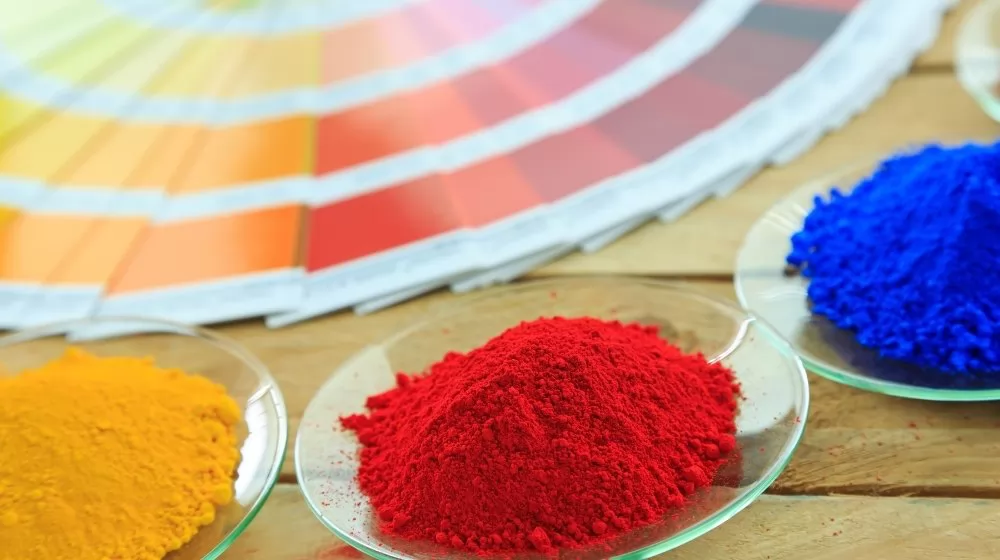
Choosing the right powder coating color can seem overwhelming due to the sheer variety available. However, by understanding the basics of solid colors, gloss levels, special effects, and textures, you can select the ideal option for your project.
Solid colors in powder coating are your standard, one-dimensional finishes that offer a uniform and consistent color. They are the most common choice for powder coating applications due to their simplicity and versatility. When choosing a solid color, consider the intended use of the item and how the color will interact with its surroundings.
Your choice of color should reflect the purpose of the item and its environment. If you're coating an outdoor item, for example, you might choose a color that blends with the landscape or a bright color to make it stand out. For indoor items, consider the room's color scheme. Remember that light colors can make a small space seem larger, while dark colors create an intimate setting.
Gloss level is another important factor to consider. High-gloss finishes are reflective and attention-grabbing, making them suitable for decorative pieces. Matte or low-gloss finishes, on the other hand, provide a more subtle and sophisticated look. They are also better at hiding surface imperfections.
Special effect finishes, such as metallic, iridescent, or candy colors, can add a unique touch to your item. However, these finishes can also be more challenging to touch up and might not be suitable for all applications. Make sure to consider these factors when choosing a special effect finish.
Finally, texture is a critical component in choosing your powder coating. Smooth finishes provide a clean and polished look but can show scratches more easily. Textured finishes, such as vein or hammer tone, can hide surface imperfections and provide additional durability. The right texture can add an extra layer of interest and practicality to your finished item.
In conclusion, the key to choosing the right powder coating color lies in understanding your project's requirements and the different options available. By considering these factors, you'll be able to select the perfect color, gloss level, and texture for your needs.
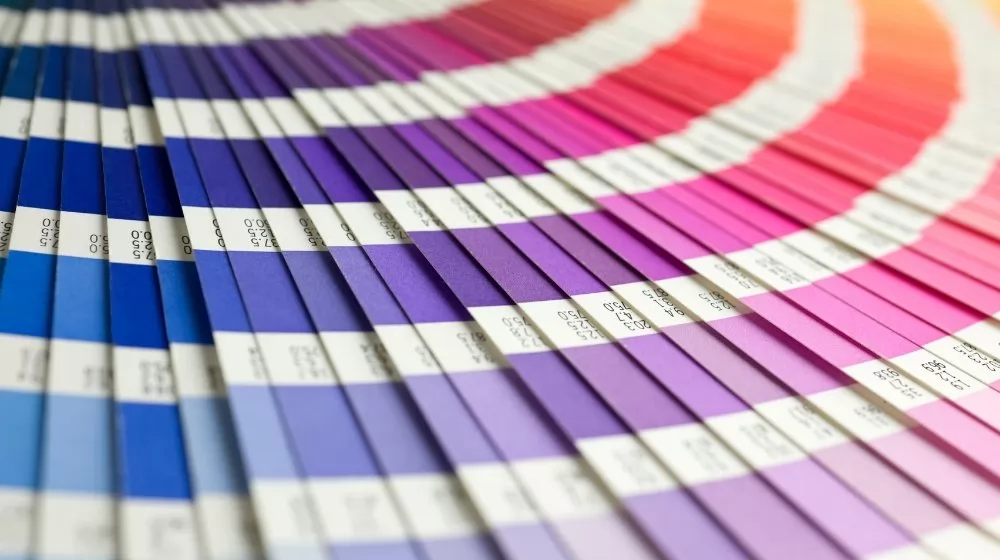
When you're deciding on the best powder coat colors for your project, there are several key factors to consider. Let's explore these aspects in detail to ensure you make the most informed decision possible.
The first thing you need to consider is the purpose and functionality of the item being coated. If it's a piece of machinery, for instance, you may opt for darker colors that hide grime and wear. On the other hand, if you're powder coating a piece of art or decor, the color choice might lean towards aesthetics rather than practicality.
The environment in which the coated object will be used is another crucial consideration. If the object will be used outdoors, you need to choose a UV-resistant color that won't fade in sunlight. In humid environments, anti-corrosive powder coatings are a must. If durability is a concern, consider a textured finish, which can hide dings and scratches better than a smooth finish.
Visual appeal plays a significant role in color selection. The color should be pleasing to the eye and complement the overall design and color scheme of the space where the object will be placed. Trendy colors can make a strong visual impact, and metallic or iridescent colors can add a touch of sophistication or uniqueness.
The psychology of color should not be overlooked when choosing powder coating colors. Different colors can evoke different emotions and reactions. For instance, red is often associated with energy and passion, while blue can evoke feelings of calm and trust. Green can symbolize nature and tranquility, and yellow can convey joy and creativity. Consider how you want people to feel when they see the coated object.
Colors can also influence perceptions. Light colors can make a small object appear larger, while dark colors can make an object appear smaller. Warm colors like red, orange, and yellow can give the illusion of warmth and closeness, while cool colors like blue and green can create a sense of distance or space.
Lighting conditions can greatly affect how a color is perceived. Natural daylight will show the color's truest form, while fluorescent light can cast a blue tone on colors. Incandescent lighting can make reds and yellows more vibrant but can mute blues and greens. It's important to consider the lighting conditions where the coated object will be placed.
Considering these factors will guide you in making a more informed choice when selecting the perfect powder coating color for your project.
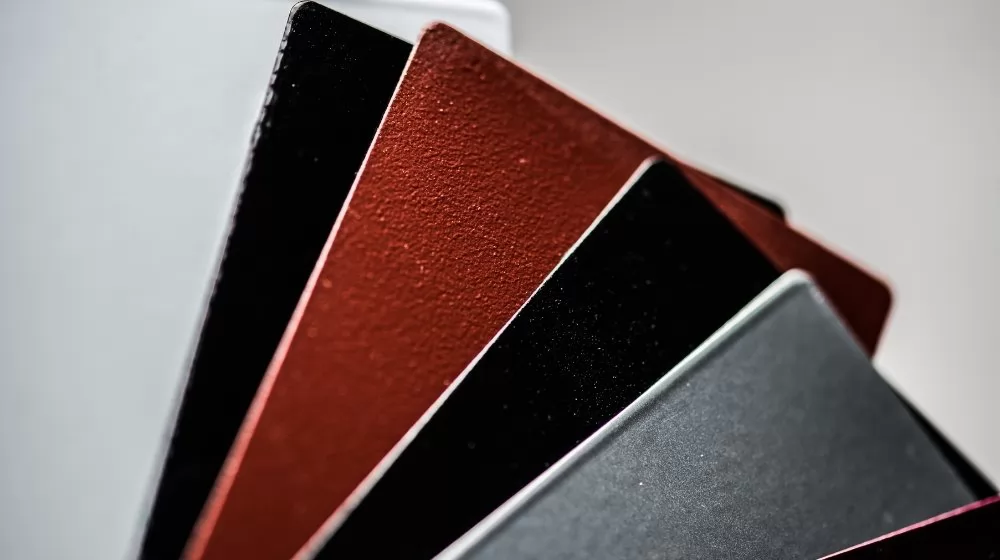
The versatility of powder coating colors comes into play across a range of industries, each with unique requirements and preferences. Let's delve into some specific sectors to understand the role and selection of colors better.
From the broad strokes of general construction to the minute details of delicate jewelry, powder coating colors span the gamut of applications. The chosen colors are as diverse as the industries themselves, selected not only for aesthetics but also for their functional contributions such as improving visibility or resisting environmental factors.
The automotive industry, renowned for its extensive use of powder coating, typically leans toward cool powder coat colors and metallic shades for a sleek, modern appeal. Classic blacks, silvers, and whites reign supreme for their timeless appeal, though brighter hues like red, blue, or even gold can add a touch of individuality to a vehicle.
Outdoor furniture and equipment manufacturers often gravitate towards natural hues that seamlessly blend into the surroundings. Earthy browns, forest greens, and sky blues are common choices. Additionally, UV-resistant powder coating paint colors are prioritized to ensure the furniture maintains its aesthetic appeal despite exposure to sunlight.
In the realm of appliances and home decor, neutral and subdued powder coating colors are often preferred. Classic whites, blacks, and stainless-steel hues offer a clean and modern look that can blend well with most interior design themes. However, there's also a trend toward using bold and vibrant colors, such as reds or blues, to create statement pieces that stand out in a space.
Through these practical applications, the myriad possibilities of powder coating colors come to light, underlining their role in not just beautifying but also extending the lifespan and functionality of various products across industries.
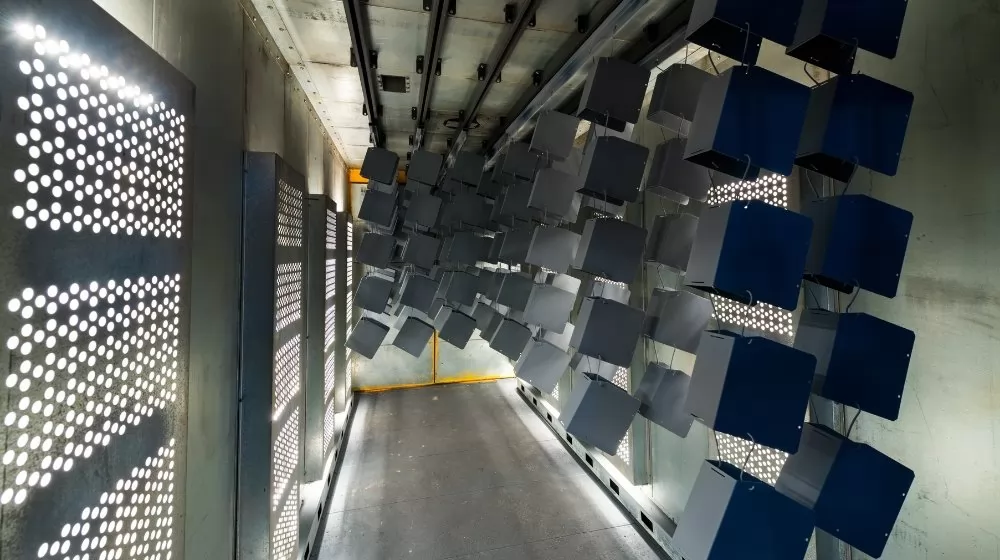
Sourcing the right powder coating colors can make all the difference in your final product. This process involves selecting a reliable supplier, understanding their product offerings, and asking the right questions to ensure you choose the best colors for your needs.
When sourcing powder coating colors, it's crucial to establish a strong working relationship with manufacturers and suppliers. They can provide guidance on the vast array of powder coating colors available, including standard and special effect options. This relationship is crucial for gaining insight into the latest trends, understanding the functionality of different colors, and ensuring you're choosing colors that align with your project's requirements.
When choosing a powder coating supplier, look for a company with a proven track record in the industry. They should provide high-quality products, have extensive knowledge about powder coating colors, and offer excellent customer service. It's also important to check if they can fulfill your specific needs, such as custom colors or large-scale production capabilities.
When it comes to selecting the best powder coat colors, there are several key questions to ask your supplier:
By considering these points and asking the right questions, you can source the most suitable powder coating colors for your specific applications.
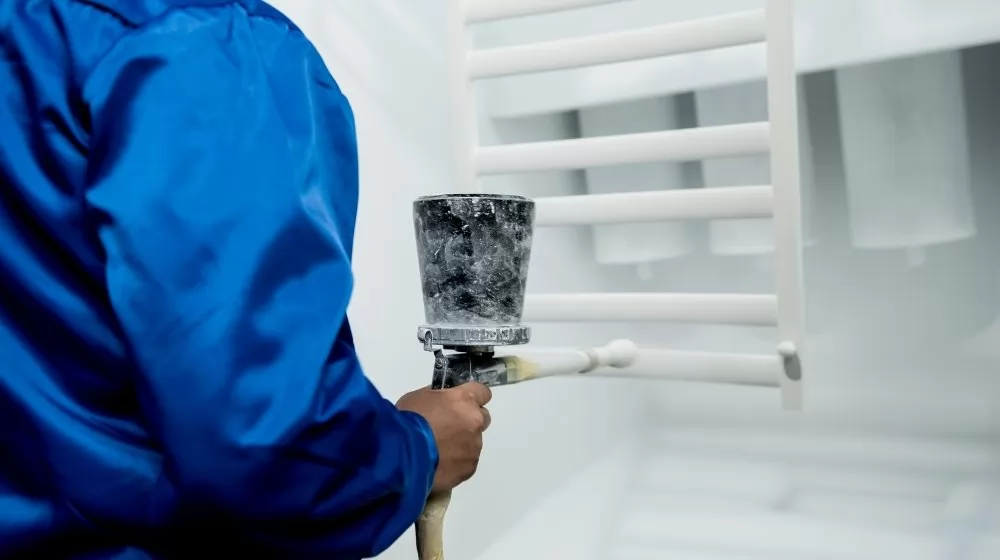
When standard colors cannot capture the unique vision you have for your product, custom powder coating colors step in to fill the gap. These bespoke hues, tailor-made to your specifications, can elevate your design and lend a distinctive flair to your project.
To create custom colors, powder manufacturers mix different pigments and resin types in specific proportions, carefully controlling the process to ensure consistency and quality. This process can be tailored to produce virtually any color, finish, or effect you can imagine—from the deepest blacks to the most vibrant fluorescents, from ultra-matte finishes to high-gloss shine, and everything in between.
Custom colors give you the power to set your product apart from the competition, reflecting your brand's personality and resonating with your target audience. They can also be used to create a specific mood, evoke certain emotions, or highlight specific features of the product. Ultimately, custom colors are a powerful tool for conveying your brand's unique vision and story.
To create custom colors, it's essential to work closely with your powder coating supplier. Provide them with as much information as possible about your desired color, including reference samples if possible. It may take several iterations to get the color just right, so be prepared for this process to take some time. However, the end result—a product that reflects your unique vision—will be worth the effort.
Selecting the perfect powder coating color is no small task. From understanding the basics of powder coating, to navigating the expansive color spectrum, and making that crucial choice of color for your project, the process requires a careful balance of technical knowledge, aesthetic sensibility, and practical considerations.
Remember, the best powder coat colors are those that not only meet the technical requirements of your project but also align with your design vision. Whether you're working with standard colors or venturing into the realm of custom hues, it's all about finding a color that brings your product to life and resonates with your target audience.
Choosing the perfect powder coating color can seem overwhelming, but it doesn't have to be. With the right partner at your side, this process can be exciting, creative, and ultimately rewarding. At Wintoly, we are dedicated to helping you navigate the colorful world of powder coating. As a leading powder coating manufacturer, we offer an extensive array of standard colors, as well as custom powder coating solutions tailored to your specific needs. Let us help you bring your unique vision to life, with powder coating colors that captivate, protect, and last. Visit our website to learn more about our offerings and start your colorful journey with Wintoly today.
Read More:
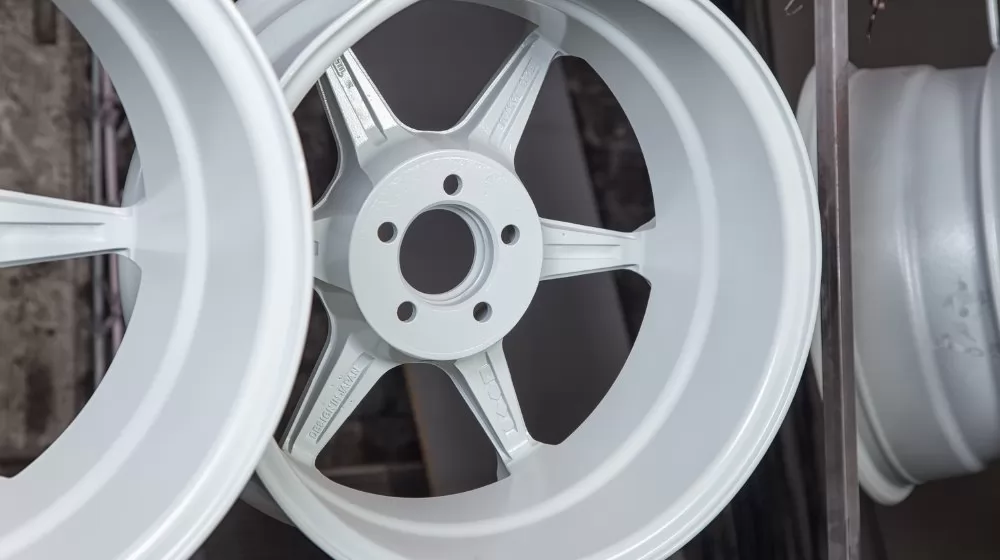
Yes, you can technically mix different powder coating colors, but the process is more complex than mixing liquid paints. It requires professional knowledge and precise control of the mixing process. Typically, this process is carried out by the powder manufacturer, ensuring the highest quality and consistency.
Powder coating colors are extremely durable and resistant to fading, chipping, and scratching. However, just like any other surface, long-term exposure to the sun and elements can potentially cause some fading over time. High-quality powder coatings are designed to minimize this effect and maintain their vibrancy for many years.
Small chips or scratches in powder coating can often be repaired using a color-matched paint. Larger areas of damage may require the damaged coating to be removed and the item to be re-coated. Always consult with your powder coating supplier or a professional for the best results.
Powder coatings are generally safe and environmentally friendly. However, as with any manufacturing process, it's important to adhere to safety guidelines when applying the coating, regardless of the color. Always follow the manufacturer's instructions and safety guidelines.
Powder coating offers a wider range of colors and finishes compared to traditional paint. From solid colors to metallics, fluorescents, and special effects, the possibilities are virtually endless. Additionally, powder coatings provide a more durable and high-quality finish.
Yes, many powder coating manufacturers can match their colors to Pantone references or other color systems. This service is especially useful for brands that have specific colors associated with their identity. Always check with your supplier about their color-matching capabilities.
1. What is powder coating?
2. What are the benefits of using powder coating?
3. What industries commonly utilize powder coating?
4. How do I choose a reliable powder coating supplier?
5. What types of powder coatings are available?
6. What is the typical minimum order quantity (MOQ) for powder coatings?
7. Can I request custom colors or formulations?
8. How do I ensure quality control when ordering powder coatings?
9. What are the typical curing requirements for powder coatings?
10. What are the payment terms typically offered by powder coating suppliers?
11. How can I request samples of powder coatings?
12. What should I consider when applying powder coatings?
When selecting a powder coating supplier, it’s essential to evaluate their product offerings, quality assurance processes, and customer service. Doing thorough research can help you find a supplier that meets your specific needs effectively.

 terrychen@wintoly.com
terrychen@wintoly.com
.png) 0086-757-85407388
0086-757-85407388
 6 Chaoyang Rd., National Demonstration Eco-industrialzone, Nanhai, Foshan,Guangdong,China
6 Chaoyang Rd., National Demonstration Eco-industrialzone, Nanhai, Foshan,Guangdong,China

.png)
